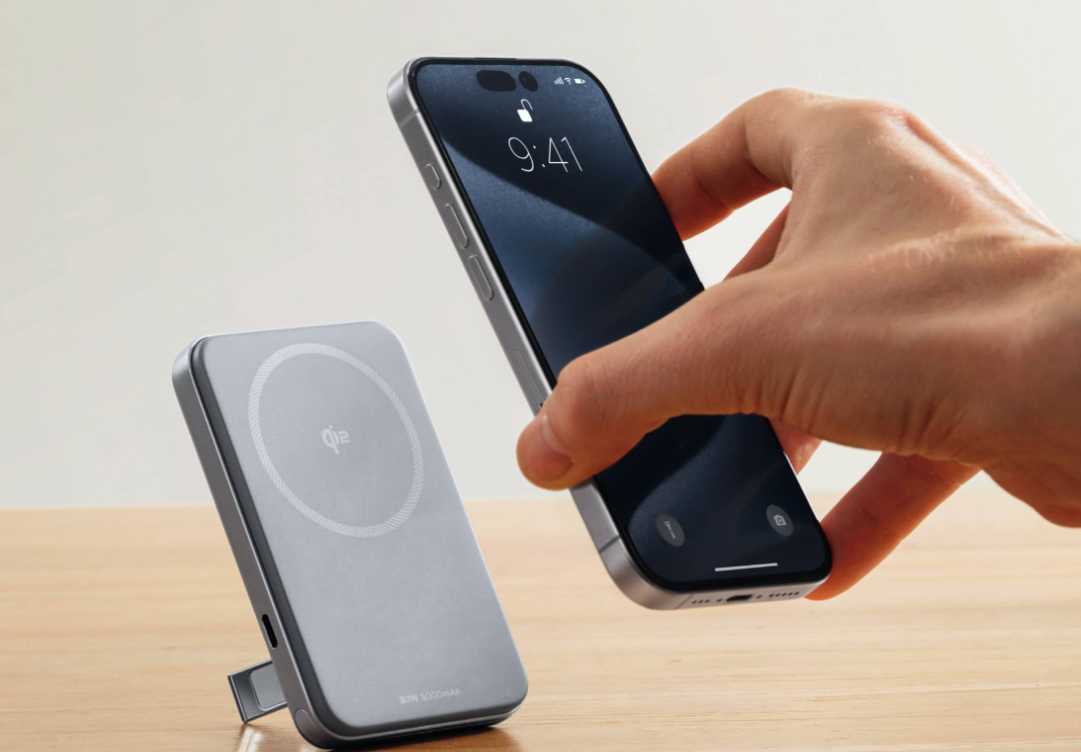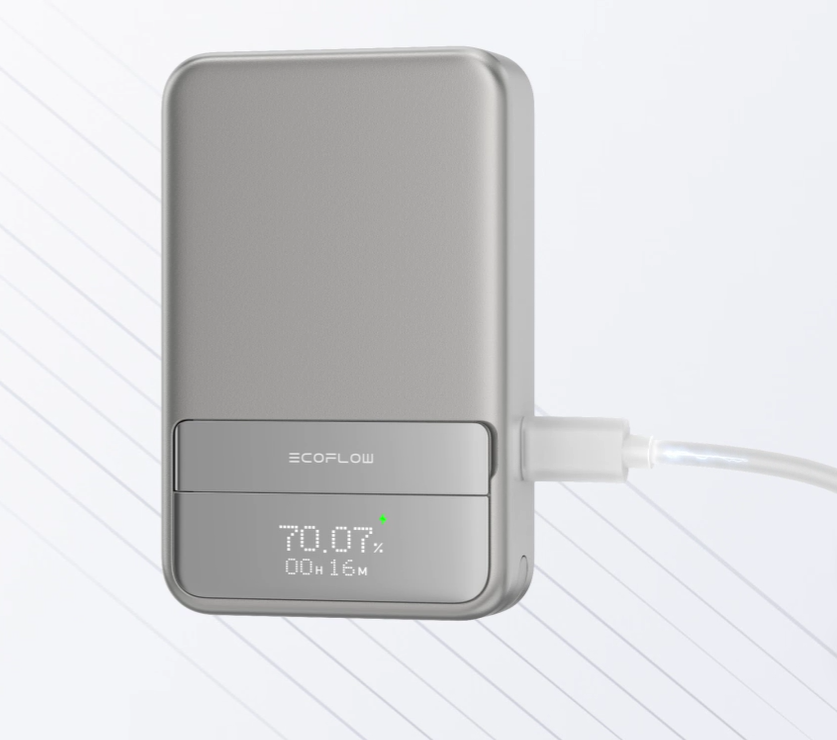MagSafe vs. Wireless Charging: What You Need to Know
When Apple launched MagSafe, it introduced a new type of iPhone magnetic charger—a simple but significant improvement on familiar technology by adding magnets for perfect alignment. This has led many to assume it's just a branded version of the Qi charging standard that other phones use.
While MagSafe does start with Qi as its foundation, the actual differences in charging speed, efficiency, and what you can do with it are significant. This guide will clarify exactly what separates them.
Qi: The Universal Standard for Wireless Charging
To understand the advances MagSafe brings, it's essential to first look at Qi, the technology that serves as its foundation.
How Qi Technology Works
Pronounced "chee," from the Chinese word for "energy flow," Qi is the open, universal standard that allows wireless charging to work across a vast number of different brands and devices. It’s the reason a Samsung phone and an older iPhone can both power up on the same charging mat. The technology is based on inductive charging, which uses two coils: a transmitter coil in the charging pad and a receiver coil in your device. When the device is placed on the pad, it creates an electromagnetic field that wirelessly transfers energy to the battery.
The Challenge of Finding the "Sweet Spot"
In practice, using a Qi charger is straightforward. You place a compatible device on the pad, and it begins to charge. However, for the energy transfer to be efficient, the two coils must be almost perfectly aligned. This requirement creates a small target area that users often call the "sweet spot." A slight nudge or incorrect placement can disrupt this connection, leading to significantly slower charging or causing it to stop altogether.
Qi's Core Strengths and Weaknesses
The primary advantage of the Qi standard is its universal compatibility. It supports a massive ecosystem of electronics, making it a versatile choice for anyone with devices from different manufacturers. However, it comes with notable limitations. On iPhones (from the iPhone 8 up to the iPhone 11 series), Qi charging speed is capped at 7.5 watts (W), which is considerably slower than charging with a cable.
The most significant drawback, however, is the alignment problem. Misalignment doesn't just slow down charging; it can cause both the charger and the device to generate excess heat. This occurs because the system works inefficiently to transfer power, wasting energy that converts to heat. Over time, this repeated heat exposure can negatively affect the long-term health of your device's battery.


MagSafe: Apple's Magnetic Enhancement for Qi
With the launch of the iPhone 12, Apple didn't reinvent wireless charging; it enhanced it. MagSafe is not a replacement for Qi but is instead a proprietary improvement built directly on the existing standard.
The Core Innovation: Adding Magnets
At its heart, MagSafe is still a Qi-based wireless charging system. The defining innovation is the addition of a circular array of magnets, positioned precisely around the charging coil inside the iPhone. This magnetic ring is the key that overcomes the primary weakness of standard Qi charging.
Solving the Alignment Problem with a "Snap"
The effectiveness of MagSafe is in its practical application. When you bring an iPhone 12 or newer close to an iPhone magnetic charger, the magnets automatically guide the phone into the perfect position, creating a secure "snap" as the two components lock together. This eliminates any guesswork in finding the sweet spot. The connection is firm enough that you can pick up and use your phone while it continues to charge—a level of convenience not possible with traditional flat-lay wireless chargers.
Key Advantages: Faster Speed and Better Efficiency
This technology is exclusive to Apple's hardware, beginning with the iPhone 12 series. The most compelling benefit is the significant boost in charging speed. MagSafe can deliver up to 15W of power to an iPhone, effectively doubling the 7.5W limit of standard Qi charging for these devices. This results in a much faster charging time, bringing it closer to the speeds of a wired connection.
Furthermore, the guaranteed perfect alignment makes the entire process more efficient. Because the energy transfer is optimized, less power is wasted as heat. This leads to a more reliable, cooler charging experience that helps preserve your battery's long-term health.
Qi vs. MagSafe Charging: A Head-to-Head Comparison
While MagSafe is built upon the Qi standard, they offer distinct experiences. The best choice for you comes down to a direct comparison of their differences in speed, convenience, compatibility, and cost.
Speed and Power Delivery
The most significant gap is in performance. A certified "Made for MagSafe" charger, when paired with a 20W or higher power adapter, delivers a full 15W of power to a compatible iPhone. In contrast, that same iPhone will only draw a maximum of 7.5W from a standard Qi charger. This means MagSafe can charge your device up to twice as fast—a crucial advantage when you need a quick power boost.
Convenience and Practical Use
An iPhone magnetic charger offers a more seamless experience. The magnetic 'snap' is effortless and confirms that charging has started correctly. This secure connection enables new types of accessories, like stands that prop the phone up at a viewable angle or car mounts that charge while you navigate. You can also pick up and use your phone while it's attached to the charger. Standard Qi requires more deliberate action, as you must carefully place the device on a flat pad and cannot typically use it without disrupting the charge.
Compatibility and Ecosystem
In terms of compatibility, Qi has the broader reach. A standard Qi charger is the universal solution, able to power devices from nearly every major electronics brand. A MagSafe charger, while optimized for newer iPhones, is also backward-compatible. It can function as a standard 7.5W Qi charger for older iPhones, Android phones, and other accessories, just without the magnetic connection. While this makes MagSafe chargers versatile, a standard Qi pad is often more practical for a multi-brand environment.
Cost
Cost is another important factor. The market for standard Qi chargers is mature, offering a vast selection of affordable and reliable options from countless brands. As a newer, Apple-certified technology, MagSafe comes at a premium. Official "Made for MagSafe" chargers and the required high-wattage power adapters are generally more expensive than their Qi counterparts.
More Than a Charger: The MagSafe Accessory Ecosystem
The magnetic system inside the iPhone has opened the door to a new range of accessories that go far beyond simple charging pads. This growing ecosystem is a key part of MagSafe's appeal and a significant differentiator from standard Qi.
New Types of "Snap-On" Accessories
The magnets allow a new class of products to attach securely and precisely to the back of the iPhone. This has led to a creative market for both charging and non-charging items. Beyond the magnetic power bank, popular accessories include car mounts that hold and power your phone, desktop stands that keep it angled for video calls, and versatile multi-device chargers for an iPhone, Apple Watch, and AirPods all at once.
Beyond power, the ecosystem includes non-charging accessories like slim wallets that snap onto your phone, grips and PopSockets for a more secure hold, and specialized mounts for attaching the phone to a tripod for stable photography.


"Made for MagSafe" vs. "MagSafe Compatible"
When shopping for these accessories, it is crucial to understand a key distinction in labeling.
- An official "Made for MagSafe" certification means the product contains Apple-approved technology that guarantees full functionality, including the fastest 15W charging speed.
- In contrast, an accessory labeled "MagSafe Compatible" (or just "magnetic") will snap onto the phone but lacks the official chip for high-speed charging. These will only charge at the slower 7.5W Qi speed at best.
This difference is vital for anyone seeking the faster charging speeds that make MagSafe a premium option.
Align Your Charging with Your Needs!
MagSafe is not a replacement for Qi but a premium alternative for modern iPhone users. It directly solves Qi's core flaws of alignment and inefficiency, offering double the charging speed and a versatile accessory ecosystem in return for a higher cost. For those outside the Apple ecosystem or prioritizing affordability, Qi remains the practical and universal standard. Your best option depends on whether you value the peak performance and convenience of MagSafe or the widespread compatibility and accessibility of Qi.
FAQs About MagSafe and Qi Charging
Q1: Can I use a MagSafe charger on a non-MagSafe phone (like Android)?
Yes, you can. A MagSafe charger is also a standard Qi wireless charger. You can place a Qi-compatible Android phone or an older iPhone (iPhone 8 or newer) on a MagSafe charger, and it will charge at the standard Qi speed (usually 7.5W or less). However, the magnetic "snap" feature will not work, as those devices do not have the required internal magnets.
Q2: Do I need a special phone case for MagSafe to work?
Yes, for the best and most reliable connection. While MagSafe might sometimes work with a very thin standard case, it is designed to be used with either no case at all or a special "MagSafe-compatible" case. These cases have their own magnets that align perfectly with the phone's, ensuring a strong magnetic lock for both charging and attaching other accessories like wallets or grips.
Q3: Are the MagSafe magnets safe for my credit cards?
It is best to be cautious. Modern credit cards with chips are quite durable, but the magnetic stripe on some cards (like hotel key cards or older ID badges) could potentially be affected. Apple officially advises against placing credit cards, passports, or security badges between your phone and a MagSafe charger. To carry cards safely, use a specially designed MagSafe wallet that includes shielding to protect them.
Q4: Why isn't my iPhone magnetic charger giving me the full 15W speed?
This is a very common issue. To achieve the fastest 15W charging speed, you need two things: an official "Made for MagSafe" certified charger and a USB-C power adapter that is 20W or more powerful. Many third-party chargers are only "MagSafe Compatible," which means they have magnets but lack Apple's official technology for 15W charging. These chargers will be limited to the slower 7.5W Qi speed.